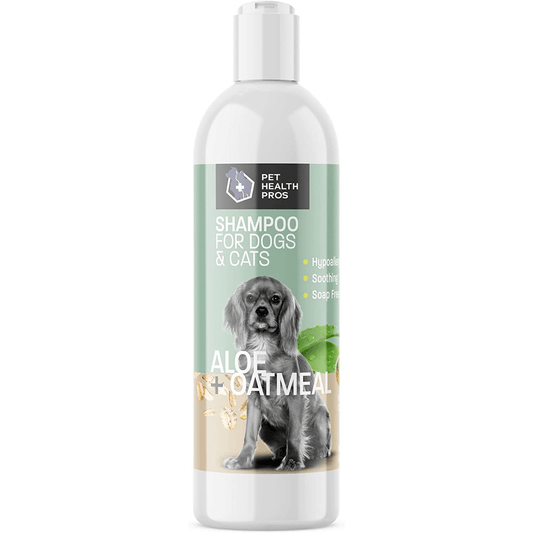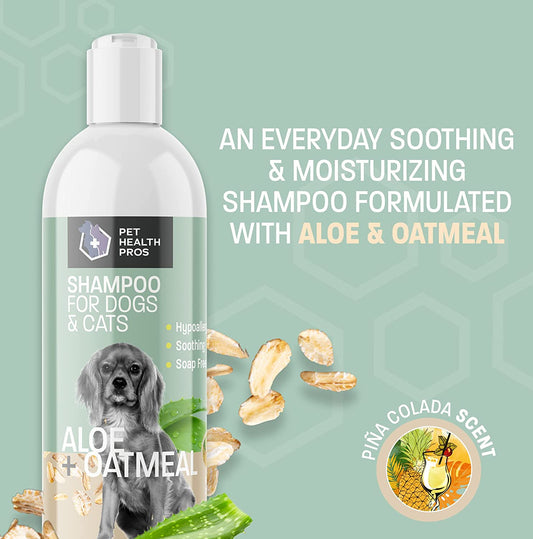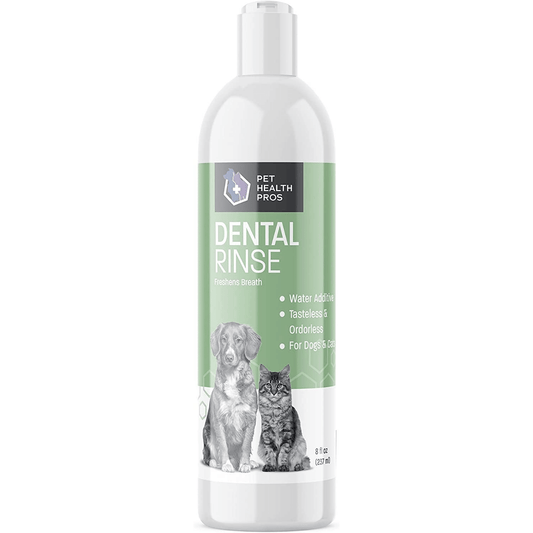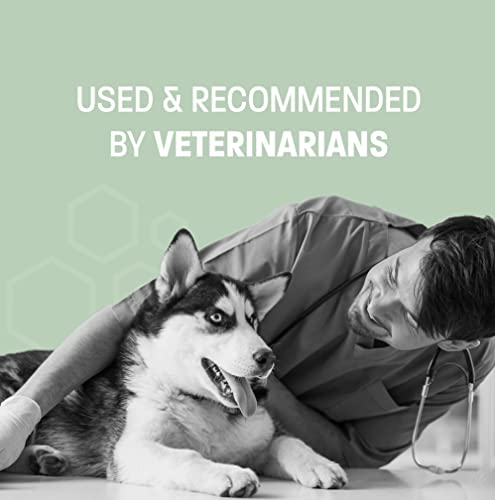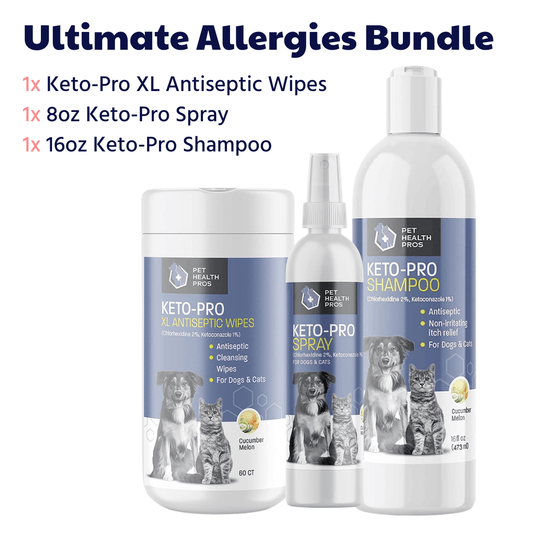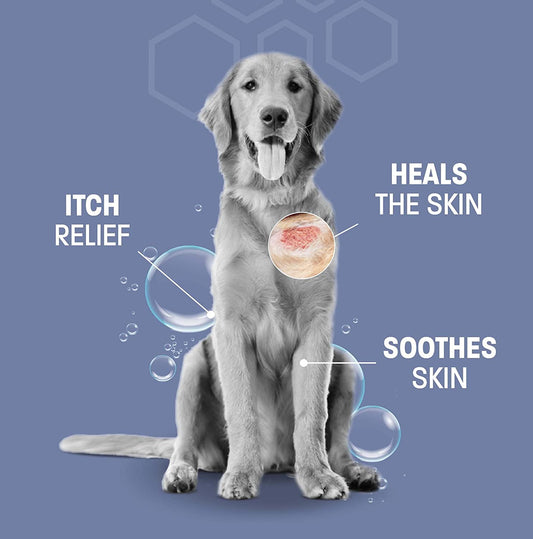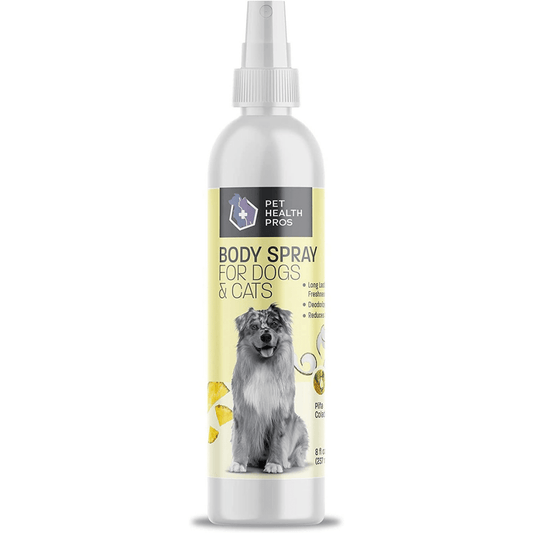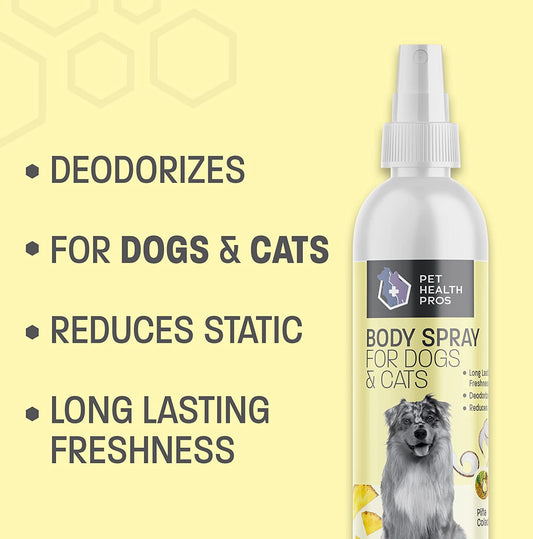Ever caught your dog gnawing on something they shouldn't? You're not alone. Many dog owners face the chewing dilemma. Luckily, there's a simple DIY solution to curb this behavior. This guide will walk you through making your own anti-chew spray using natural ingredients. It's easy, safe, and can save your furniture from those sharp little teeth.
Key Takeaways
- Understand why dogs chew to address the root of the problem.
- Use safe, natural ingredients for your DIY anti-chew spray.
- Follow a step-by-step guide to create your own spray at home.
- Apply the spray correctly for the best results.
- Explore alternative solutions if chewing persists.
Understanding Why Dogs Chew
Common Reasons for Chewing
Dogs chew for all sorts of reasons. Sometimes it's just because they're bored, and other times it's because they're teething. Puppies, especially, chew to relieve pain caused by incoming teeth. Some dogs chew for fun, others do it to relieve anxiety. It's like how some people bite their nails when they're nervous or stressed out.
Behavioral and Health Implications
Chewing isn't always just about keeping busy. It can also be a sign of something else going on. For example, if a dog is chewing more than usual, it might be dealing with stress or anxiety. On the flip side, chewing can actually be good for dogs' teeth and gums, helping keep them clean and healthy.
Identifying Problematic Chewing
Not all chewing is bad, but when your dog starts gnawing on your favorite shoes or the legs of your dining table, it becomes a problem. To figure out if your dog's chewing is an issue, look at the frequency and the items being chewed. Is it constant, or just when you leave the house? Are they chewing on toys, or is it your furniture? Identifying patterns can help pinpoint the underlying cause.
Essential Ingredients for DIY Anti Chew Spray
Natural Ingredients to Consider
When making an anti-chew spray for your dog, using natural ingredients is both effective and safe. Vinegar is a popular choice because its strong smell deters dogs from chewing. Citrus fruits like lemon or orange can also be used; dogs generally dislike their scent. Another option is cayenne pepper, which can be mixed with water to create a spray with a spicy aroma that dogs find unpleasant.
Safety Precautions for Pets
While making your DIY spray, it's crucial to ensure the safety of your pet. Always test the spray on a small area first to check for any adverse reactions. Avoid using ingredients that could be harmful if ingested, such as essential oils not specifically recommended for dogs. Remember, what works for one dog might not be suitable for another, so observe your pet's reaction closely.
Where to Source Ingredients
Most of the ingredients you'll need for your anti-chew spray are easily found in your kitchen or local grocery store. Vinegar, citrus fruits, and cayenne pepper are common household items. If you're considering more specialized ingredients, like certain essential oils, these can be found at health food stores or online. Always ensure that any product you use is safe for pets.
Step-by-Step Guide to Making Anti Chew Spray
Gathering Your Materials
Before you start, make sure you have all the necessary materials. Here's what you'll need:
- Spray bottle: An empty spray bottle, preferably one with a fine mist setting, is essential for easy application.
- Vinegar: A common household item, vinegar is a key ingredient due to its strong scent and taste.
- Water: You'll need water to dilute the vinegar and make the spray safe for your dog.
- Optional: Citrus juice or essential oils like lemon or orange for added deterrent properties.
Mixing the Ingredients
Once you have your materials ready, it's time to mix them up. Follow these simple steps:
- Fill the spray bottle halfway with vinegar.
- Add water to fill the rest of the bottle.
- If you're using citrus juice or essential oils, add a few drops now. This can enhance the spray's effectiveness.
- Secure the lid tightly and shake well to ensure all ingredients are mixed thoroughly.
Proper Storage Techniques
After mixing your spray, proper storage is crucial to maintain its effectiveness:
- Store the spray in a cool, dark place to prevent the ingredients from breaking down.
- Make sure the bottle is always sealed tightly when not in use.
- Label the bottle clearly to avoid any accidental misuse.
Creating your own anti-chew spray is not only cost-effective but also allows you to control the ingredients, ensuring they're safe for your furry friend. It's a simple yet effective solution to protect your belongings while keeping your dog safe.
Applying the DIY Anti Chew Spray Effectively
Best Practices for Application
Getting the most out of your DIY anti-chew spray involves a few smart techniques. First, always test a small area before applying it broadly to ensure your pet doesn't have an adverse reaction. Spray the solution on items your dog tends to chew, like furniture legs or shoes, from a distance of about 6-8 inches. This ensures even coverage without soaking the object.
Frequency of Use
Consistency is key. You might need to reapply the spray every few days, especially if you notice your dog returning to its old chewing habits. However, don't overdo it; excessive use might make your dog immune to the spray's deterrent effect.
Monitoring Your Dog's Reaction
Keep an eye on how your dog reacts after the spray is applied. If your dog continues to chew, it might be time to try a different formula or approach. Some dogs might need additional behavioral training or alternative deterrents.
It's important to remember that while a DIY anti-chew spray can be effective, it works best when combined with other training methods. Observing your dog's behavior and adjusting your strategy accordingly can lead to better results over time.
For more personalized advice on managing your pet's behavior, consider using a service like Pet Genius, which offers tailored insights and recommendations.
Alternative Solutions to Discourage Chewing
Training Techniques
Training your dog is one of the most effective ways to curb unwanted chewing. Consistency is key when it comes to training. Start by establishing clear boundaries and use positive reinforcement to encourage good behavior. Here are a few techniques you might find helpful:
- Redirect Attention: When you catch your dog chewing on something inappropriate, redirect their attention to a toy or a chewable item that is safe for them.
- Use Commands: Teach commands like "leave it" or "drop it" to help your dog understand what is off-limits.
- Reward Good Behavior: Whenever your dog chooses to chew on appropriate items, reward them with treats or praise.
Providing Chew Alternatives
Dogs naturally have the urge to chew, so providing suitable alternatives is crucial. Here's what you can do:
- Chew Toys: Invest in durable chew toys that are designed for dogs. These can satisfy their chewing instincts and keep them entertained.
- Edible Chews: Offer edible chews that are safe and healthy. These can include rawhide-free bones or dental chews.
- Rotating Toys: Keep your dog interested by rotating their toys regularly. This prevents boredom and keeps them engaged.
When to Consult a Professional
Sometimes, chewing can be a sign of underlying behavioral or health issues. If your dog's chewing habits are excessive or destructive, it might be time to seek professional help.
- Behavioral Experts: Consult a dog trainer or a behavioral expert if training techniques aren't effective.
- Veterinary Advice: If you suspect health issues, such as dental problems or anxiety, a visit to the vet is advisable.
- Therapy Options: In some cases, therapy or medication might be needed to address anxiety-related chewing.
Creating a chew-free environment for your dog involves understanding their needs and providing appropriate outlets for their natural behaviors. With patience and the right approach, you can guide your dog towards healthier chewing habits.
Maintaining a Chew-Free Environment
Regularly Inspecting Your Home
Keeping an eye on your home is key to stopping your dog from chewing on things they shouldn't. Check regularly for signs of chewing damage, like gnawed furniture legs or frayed wires. If you spot any damage, repair it quickly to prevent your dog from getting hurt. Here’s a quick checklist to help:
- Inspect furniture legs for bite marks.
- Check electrical cords for fraying or bite marks.
- Look over shoes and clothing left on the floor.
Reinforcing Positive Behavior
Dogs respond well to positive reinforcement. When your dog chews on appropriate items, like their toys, reward them with treats or praise. This not only encourages them to repeat the behavior but also strengthens your bond. Always keep a stash of treats handy to reward good behavior right away.
Adjusting Strategies as Needed
Sometimes, what worked before might not work now. Be ready to change your approach if your dog continues to chew on inappropriate items. You might need to try new deterrents, like a homemade anti-chew spray or training techniques to keep your dog from chewing. Keep an open mind and be patient as you find what works best for your furry friend.
Creating a chew-free environment takes time and patience, but with consistent effort, you can protect your home and keep your dog safe. Remember, each dog is unique, so what works for one might not work for another. Stay flexible and attentive to your dog's needs.
Creating a space where your pet can thrive without chewing on things they shouldn't is important. Start by keeping valuable items out of reach and providing plenty of chew toys. Regularly check your home for any tempting items that might attract your pet's attention. For more tips on how to keep your furry friend happy and healthy, visit our website!
Wrapping It Up
So, there you have it! Making your own anti-chew spray for your dog isn't just easy, it's also a great way to save some cash and keep your furry friend from gnawing on everything in sight. Plus, you know exactly what's going into it, which is always a plus. Just remember to test a small area first to make sure your pup doesn't have any weird reactions. And if it doesn't work right away, don't worry—sometimes it takes a bit of trial and error to find the perfect mix. Keep at it, and soon enough, your dog will be steering clear of all those no-chew zones. Happy crafting!
Frequently Asked Questions
What makes dogs chew on things?
Dogs chew for many reasons like boredom, teething, or anxiety. It's their way of exploring and relieving stress.
Are all ingredients in DIY sprays safe for dogs?
Most natural ingredients are safe, but always check for allergies and avoid harmful substances like essential oils.
How often should I apply the anti-chew spray?
Apply the spray to the affected areas once a day or as needed, depending on your dog's behavior.
Can I use the spray on furniture?
Yes, you can use the spray on furniture, but test a small area first to ensure it doesn't damage the material.
What if my dog still chews after using the spray?
If chewing continues, consider training methods or consult a vet to rule out health issues.
Where can I find the ingredients for the spray?
You can find ingredients at grocery stores or online. Look for natural and pet-safe options.

